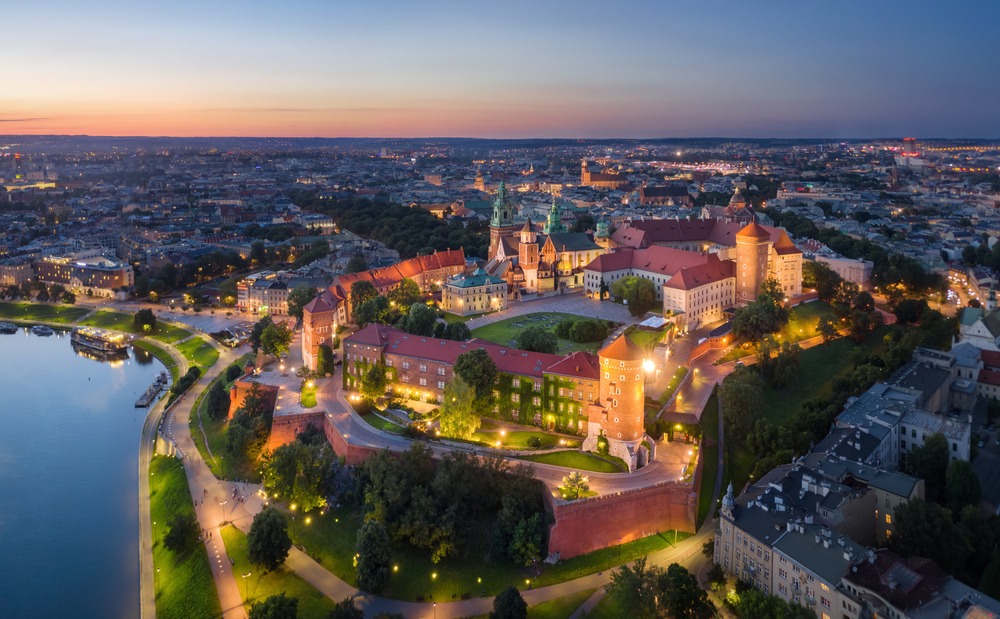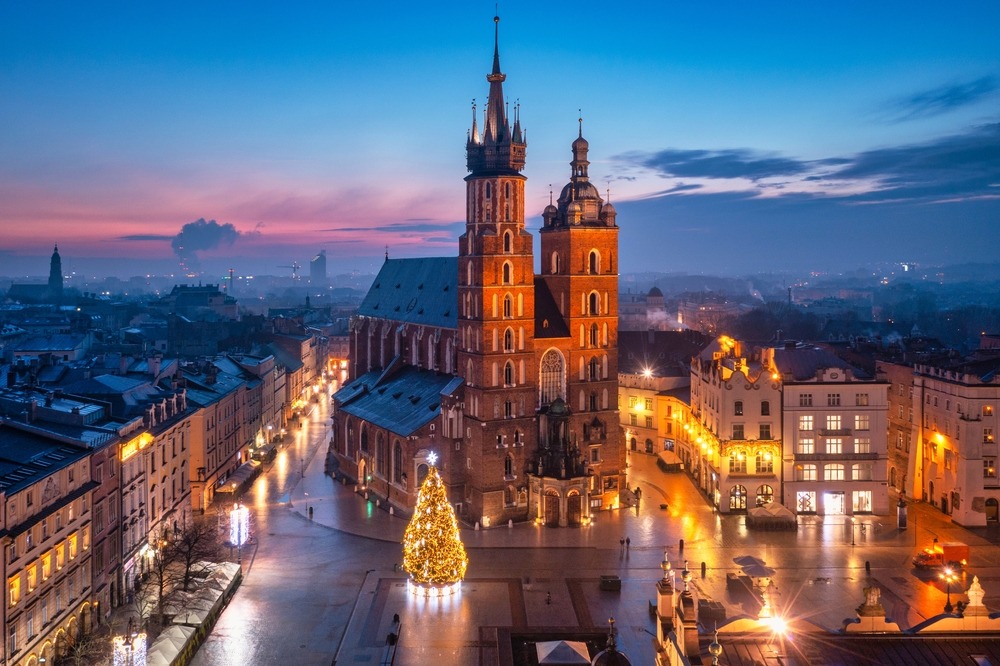Kraków, Poland | Origin, History and Attractions
The History of Kraków, Poland
Kraków, one of Europe’s oldest and most storied cities, serves as a living tapestry of Polish history, legend, and cultural splendor. Its origins are steeped in myth, with the most famous tale involving the founding of the city by the legendary Prince Krakus. According to legend, Krakus vanquished a fearsome dragon that lived in a cave beneath Wawel Hill—now known as the Dragon’s Den—and established a settlement in its place. The city was named in his honor, and this mythical origin remains a cherished part of Kraków’s identity.
Historical records show that Kraków was already a thriving trading center by the 7th century, strategically situated on important commercial routes between Western and Eastern Europe. By the 10th century, it had become a major political and economic hub in the emerging Polish state. In 1038, Kraków was declared the capital of Poland, a status it held for centuries.
Kraków flourished during the Middle Ages and Renaissance, becoming a center of art, science, and learning. The establishment of the Jagiellonian University in 1364, one of the oldest universities in the world, cemented the city’s status as an intellectual powerhouse. Royal coronations and burials took place at Wawel Cathedral, while the royal court operated from Wawel Castle, turning Kraków into the political heart of the Polish kingdom.
Though the capital was moved to Warsaw in 1596, Kraków remained a spiritual and cultural capital. The city endured invasions, partitions, and occupations—including periods of Austrian control and the horrors of World War II, during which its Jewish community was decimated by the Holocaust. Unlike Warsaw, however, Kraków was largely spared from wartime destruction, allowing its architectural treasures to survive intact.
Since the fall of communism in 1989, Kraków has experienced a renaissance. Today, it is one of Europe’s most visited cities, admired for its beautifully preserved medieval core, its dynamic artistic life, and its enduring place at the heart of Polish national identity.

Top 25 Attractions in Kraków, Poland
-
Wawel Castle – A stunning Renaissance-era complex perched atop Wawel Hill, once the seat of Polish kings and queens.
-
Wawel Cathedral – The coronation and burial site of Polish monarchs, saints, and national heroes.
-
Main Market Square (Rynek Główny) – The largest medieval square in Europe, buzzing with cafes, musicians, and historic landmarks.
-
St. Mary’s Basilica (Kościół Mariacki) – Known for its Gothic twin towers and the hourly trumpet call (Hejnał) from the taller one.
-
Cloth Hall (Sukiennice) – A Renaissance trading hall in the center of the Market Square, now home to souvenir shops and an art gallery.
-
Kazimierz District – The historic Jewish quarter, filled with synagogues, memorials, galleries, and bohemian cafes.
-
Oskar Schindler’s Factory – A moving museum chronicling Kraków’s wartime experience and Schindler’s rescue of over 1,000 Jews.
-
Planty Park – A green belt that encircles the Old Town where the medieval city walls once stood, perfect for a scenic stroll.
-
The Barbican – A 15th-century fortified outpost, once part of the city’s medieval defense system.
-
Florian Gate (Brama Floriańska) – A grand city gate leading into the Old Town, once the main entrance through the city walls.
-
Jagiellonian University – Collegium Maius – The historic heart of Poland’s oldest university, with a charming courtyard and museum.
-
Rynek Underground Museum – A modern archaeological museum beneath the Main Square, offering an immersive glimpse into medieval Kraków.
-
St. Florian’s Street (Ulica Floriańska) – A picturesque street leading from the Florian Gate to the Main Square, lined with shops and history.
-
Kraków Ghetto Memorial – Ghetto Heroes Square – A poignant monument in Podgórze commemorating Kraków’s Jewish community during WWII.
-
Tadeusz Kościuszko Mound – A symbolic hill dedicated to the Polish hero, offering panoramic views of the city.
-
MOCAK (Museum of Contemporary Art in Kraków) – A dynamic space for modern and contemporary art adjacent to Schindler’s Factory.
-
St. Peter and Paul Church – An early Baroque church known for its ornate interior and statues of the apostles.
-
Dragon’s Den (Smocza Jama) – A cave beneath Wawel Hill associated with the city’s founding legend, complete with a fire-breathing dragon statue at the entrance.
-
Nowa Huta – A fascinating suburb designed as a model socialist city, now an area of architectural interest and alternative culture.
-
National Museum in Kraków – Poland’s largest museum with extensive collections of fine art, including works by Leonardo da Vinci and Jan Matejko.
-
Galeria Krakowska – A large and modern shopping mall near the main train station, ideal for contemporary retail therapy.
-
Basilica of the Holy Trinity (Dominican Church) – A majestic Gothic church with a peaceful interior and significant historical roots.
-
Manggha Museum of Japanese Art and Technology – A cultural center celebrating East Asian art, located along the Vistula River.
-
Church of St. Francis of Assisi – Known for its colorful stained glass by Stanisław Wyspiański and peaceful atmosphere.
-
Café culture and Cellar Bars – Not a single site, but a must-experience: Kraków’s historic cellars are home to atmospheric cafes and pubs where the city’s vibrant nightlife thrives.

Kraków is not just a city—it’s a storybook brought to life, where medieval legends, royal legacies, and modern resilience intertwine. Whether you’re exploring its Gothic churches, strolling through vibrant neighborhoods, or absorbing the echoes of history in its museums and streets, Kraków offers an experience both profound and unforgettable.

































